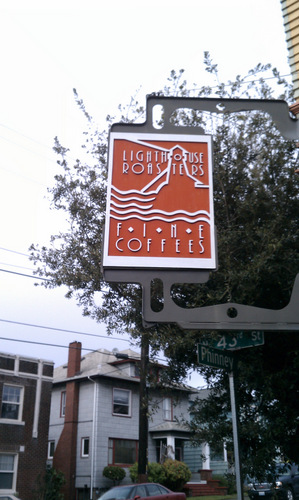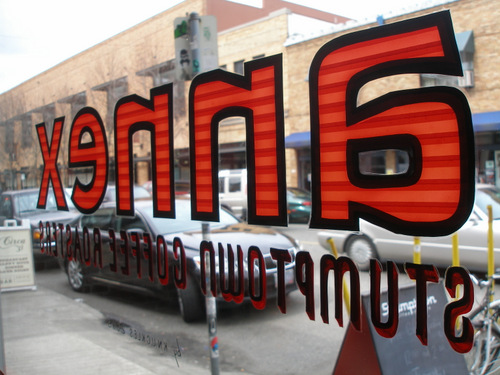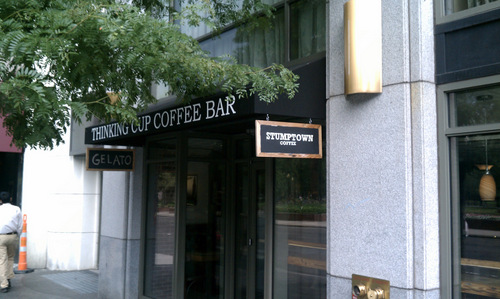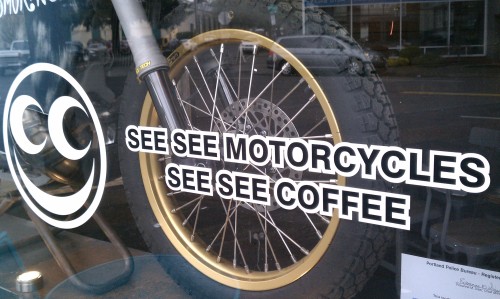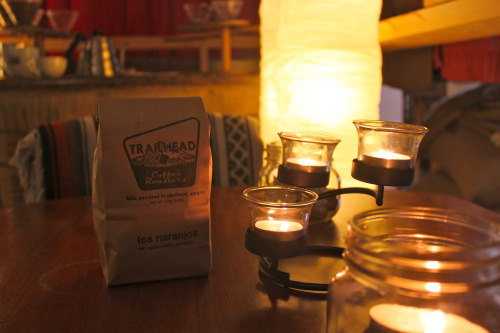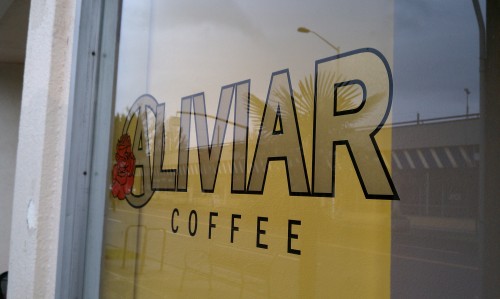Change is not easy (one could call me Mr. Inertia) and it is not always good, but it is inevitable. I had a conversation the other day with a café owner who had purchased an operating café from someone instead of starting a new one from scratch. The café, located in a residential area, came with a solid group of regulars who had patronized the shop for several years. When the new owner took over, he changed a few things, partly for the health of the business, and also because he had his own ideas for how a café should run. When he switched brew methods (to a pourover) and started charging for refills (fifty cents!), long-time customers pushed back. How dare he change their routine! Eventually, the regulars came around, but it took several months.
Since change can be disruptive, I was somewhat surprised when I heard that Stumptown, Portland’s most influential third wave coffee roaster, was now serving single-origin espresso in its cafés. Selling s-o espressos is not a new thing. Third wave cafés have been pulling single-origin espresso shots for years. Many offer an espresso blend alongside a single origin, while others serve strictly s-o espressos. The rise of barista competitions, where baristas highlight the farms and farmers who grow their coffees, helped push s-o espressos into the café setting.
While other cafés (including several Stumptown wholesale accounts) moved into selling single-origin espressos, Stumptown’s own shops only offered Hair Bender, the company’s espresso blend. Hair Bender is one of the company’s biggest success stories. The blend’s unique profile, with distinct lemon and chocolate flavors layered throughout the cup, stood out against the dark-roasted blends so common in the Pacific Northwest and changed perceptions of what espresso should taste like. It formed the foundation for the company to grow on. Without Hair Bender, Stumptown would likely be a much smaller, regional roaster instead of the international brand it is today.
To see how Stumptown would present its new espresso, I went to the original Stumptown café, on Southeast Division, and ordered one. Stumptown’s Costa Rica Montes de Oro, currently on grind, is the first of what is to be a rotating single-origin espresso in its cafés. The first sip seemed like it was going to be sharp, but the texture quickly rounded into something that felt very smooth on the palate. The Montes de Oro had a muted acidity, with notes of cherry and almond and just a hint of lemon. Stumptown’s foray into single-origin espressos was a nice entry into the new space.
In a way, the addition of single-origin espresso to the menu was coming full circle for Stumptown. The company that pioneered the third wave in Portland was borrowing some tricks from the companies following in its footsteps. The more success you have, the more you have to lose, so it was refreshing to see Stumptown, one of the most successful Portland coffee companies, try something new. The change was not huge, but it showed that Stumptown is willing to experiment with new things and, when it does, to execute very well.
The question is, what’s next?
